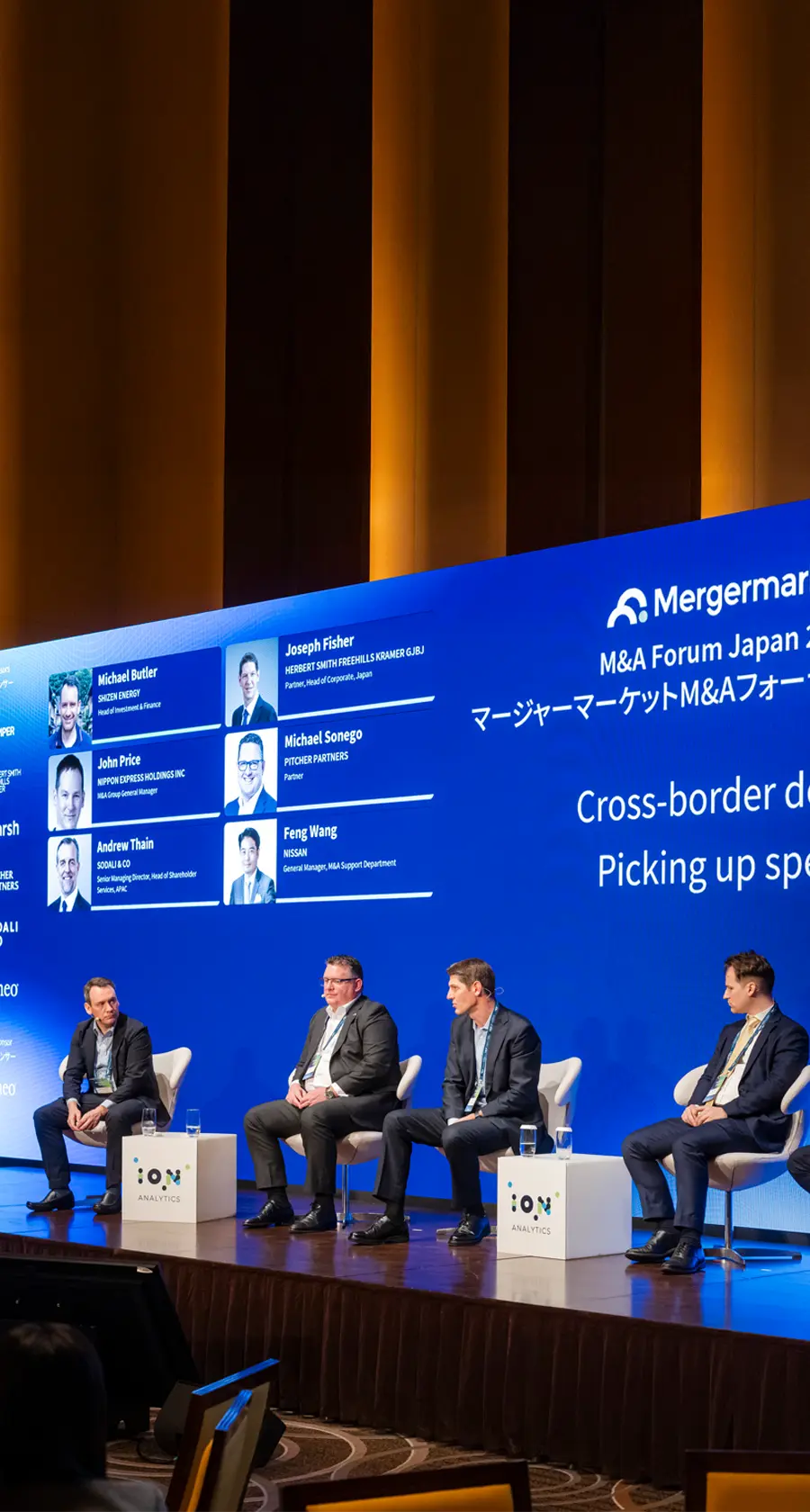
Subscribe to stay informed, inspired and involved.
Sodali & Co experts joined a panel discussion at the Mergermarket M&A Forum Japan 2025 to shed light on how Japanese corporations are approaching cross-border mergers and acquisitions amid a landscape marked by geopolitical uncertainty, currency volatility, and growing investor scrutiny.
With outbound dealmaking on the rise and inbound investment into Japan gaining traction, panelists representing corporates, law firms, advisory firms, and shareholder engagement specialists explored both the challenges and strategic advantages shaping the Japanese M&A activity.
Key Takeaways
1. Long-Term Strategy Over Short-Term Noise
Japanese corporations are staying focused on long-term global expansion strategies, particularly as demographic challenges at home and a surplus of on-balance-sheet cash drive them to seek growth overseas. While recent macroeconomic and geopolitical disruptions, such as U.S. tariffs and Middle East tensions, have created volatility, most panelists agree that companies should not overreact to short-term instability. Instead, thoughtful planning and resilient business cases will enable sustainable M&A execution.
2. Japanese Companies Are Viewed as Trusted Buyers
Across global markets, Japanese acquirers are often seen as stable, long-term investors. Their approach—characterized by respect for local management, continuity, and partnership—has made them favored bidders in many competitive processes. This reputation helps Japanese firms win deals, even when their timelines are longer or their bids slightly less aggressive.
3. Communication and Deal Timelines Are Critical
One of the cultural barriers noted was the slower and more methodical approval process within Japanese corporations, which overseas sellers can misinterpret. Panelists emphasized the importance of early communication with counterparties and advisors to ensure that deal timelines align with Japanese internal decision-making processes. This transparency can help Japanese bidders remain competitive without compromising governance standards.
4. Cultural Integration and Synergy Realization Are Central to post-merger integration
Successful post-merger integration hinges on achieving synergies while respecting local autonomy. Several panelists, including representatives from Nissan and Nippon Express (NX), shared insights into balancing central oversight with operational independence. Establishing clear KPIs, aligning integration priorities early, and planning PMI before the deal closes were cited as critical to realizing value.
5. Rise of Shareholder Activism and the Role of Engagement
Panelists noted a marked rise in activist investor activity across Japan, a trend supported by new guidelines from Japan’s Ministry of Economy, Trade and Industry (METI). Activists are pushing for divestitures, restructurings, and increased capital efficiency. As a result, companies engaging in cross-border transactions must carefully consider how shareholders, local and international perceive deals as opportunities. Understanding register composition, including event-driven and passive funds, is increasingly important for anticipating and managing voting outcomes.
6. Inbound Investment into Japan Accelerates
While the session focused on outbound activity, speakers also observed significant growth in inbound M&A, driven by the weak yen, Japan’s stable legal system, and governance reforms. Foreign investors are increasingly comfortable with the regulatory landscape, and private equity firms are expanding their presence in Japan’s mid-market segment.
7. Structural Flexibility in Deal-Making
Given today’s environment of uncertainty, deal structures have become more flexible. Tools clauses, as well as warranties, and indemnity insurance, as well as material adverse change clauses, are being widely used to allocate risk more effectively. These mechanisms help bridge valuation gaps, enabling deals to proceed even in volatile conditions.
8. Innovation in M&A Formats
Beyond traditional acquisitions, Japanese corporations are increasingly exploring minority investments, joint ventures, and corporate venture capital strategies. These formats allow companies to test strategic fits, access technology, and build global partnerships without assuming full integration risks upfront.
The session painted a clear picture: cross-border M&A is not only accelerating for Japanese companies, but it is also evolving. Dealmakers are navigating complexity with more sophisticated tools, better shareholder communication, and a sharper focus on long-term value creation.
Sodali & Co continues to support clients with strategic shareholder advisory and engagement solutions, ensuring that every transaction is grounded in stakeholder insight and executed for long-term success.
Click here to watch the full session.

